5.5.2009 | 04:28
Dagur jaršar
Ekki voru išnašarrįšherrann og Orkubloggarinn fyrr bśnir aš birta skżrslu um möguleika Ķslands ķ vindorku og sjįvarorku, en aš Obama stökk upp į stól og kynnti įform Bandarķkjastjórnar um aš veita slķk virkjanaleyfi utan viš strendur Bandarķkjanna.
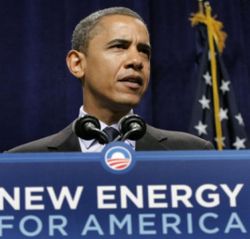
Žessi įgęti ljśflingur var staddur ķ Iowa fyrir nokkrum dögum į s.k. Earth-Day. Dagur jaršar į rętur aš rekja til Bandarķkjanna, en žar byrjušu menn fyrir um 40 įrum aš vekja sérstaka athygli į umhverfismįlum 22. aprķl įr hvert. Sķšar tóku Sameinušu žjóširnar upp samskonar siš, en sį dagur mun mišast viš vorjafndęgur.
Jį - eins og ķ svo mörg öšru standa Bandarķkin hvaš fremst ķ nįttśrvernd og umhverfismįlum. Žar var t.d. fyrst byrjaš aš meta umhverfisįhrif stórframkvęmda. Margir lķta į Bandarķkjamenn sem umhverfissóša og žaš mį vel vera réttlętanlegt. En samt er vart nokkur žjóš žeim fremri ķ nįttśruvernd.
En Bandarķkin žurfa engu aš sķšur aš taka sér tak. Stefna žeirra ķ orkumįlum hefur ekki beint haft sérstaklega gręna įsżnd. Žar gęti senn oršiš gķfurleg breyting. Į nęstu įrum lķtur śt fyrir aš žaš verši hreinlega allt snarbrjįlaš aš gera ķ endurnżjanlegri orku žarna vestan hafs.
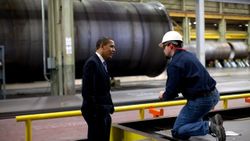
Nś er svo sannarlega rétti tķminn fyrir ķslenska rįšamenna aš benda Obama į jaršhitažekkingu Ķslendinga. Reyndar eru Bandarķkjamenn sjįlfir meš mjög mikla žekkingu og reynslu į nżtingu jaršhitans. Žess vegna vęri ekki sķšur mikilvęgt ef Ķsland gęti sérhęft sig ķ orkutegund, sem er stutt į veg komin og į góša möguleika į aš vaxa grķšarlega į nęstu įrum og įratugum. Hér er Orkubloggarinn aš vķsa til sjįvarorkunnar.
Hér aš nešan mį sjį įvarp Obama frį Degi Jaršar ķ heild (Orkubloggarinn bętti feitletrun viš į nokkrum stöšum til įhersluauka, auk nokkurra mynda til skrauts):
THE WHITE HOUSE
Office of the Press Secretary
_________________________________________________________________
For Immediate Release April 22, 2009
REMARKS BY THE PRESIDENT
ON CLEAN ENERGY
Trinity Structural Towers Manufacturing Plant
Newton, Iowa
12:52 P.M. CDT
THE PRESIDENT: Thank you so much. Thank you, Rich, for the great introduction. Thank you very much. Please, everybody have a seat.
It is good to be back in Newton, and it's a privilege to be here at Trinity Structural Towers. I've got a couple of special thank yous that I want to make, because I've got a lot of old friends -- not old in years, but been friends for a long time now. First of all, your outstanding Governor, Chet Culver, please give him a big round of applause. (Applause.) His wonderful wife, Mari, I see over here. She's not on the card, but -- (applause.) My outstanding Secretary of Agriculture, who I plucked from Iowa, Tom Vilsack and his wonderful wife Christie Vilsack. (Applause.) We've got the Attorney General of Iowa, one of my co-chairs when I ran in the Iowa caucus and nobody could pronounce my name -- Tom Miller. (Applause.) My other co-chair, Mike Fitzgerald, Treasurer of Iowa. (Applause.) We got the Iowa Secretary of State, Mike Mauro. There he is. (Applause.) We've got your outstanding member of Congress who's working hard for Newton all the time, Leonard Boswell. (Applause.) And your own pride of Newton, Mayor Chaz Allen. (Applause.) There he is, back there. It's good to see you again, Chaz.

It is terrific to be here -- and by the way, I've got a whole bunch of folks here who were active in the campaign, and precinct captains. And I just want to thank all of them for showing up, and to all the great workers who are here at this plant -- thank you. (Applause.)
I just had a terrific tour of the facility led by several of the workers and managers who operate this plant. It wasn't too long ago, as Rich said, that Maytag closed its operations in Newton. And hundreds of jobs were lost. These floors were dark and silent. The only signs of a once thriving enterprise were the cement markings where the equipment had been before they were boxed up and carted away.
Look at what we see here today. This facility is alive again with new industry. This community is still going through some tough times. If you talk to your neighbors and friends, I know they -- the community still hasn't fully recovered from the loss of Maytag. Not everybody has been rehired. But more than 100 people will now be employed at this plant -- maybe more, if we keep on moving. Many of the same folks who had lost their jobs when Maytag shut its doors now are finding once again their ability to make great products.
Now, obviously things aren't exactly the same as they were with Maytag, because now you're using the materials behind me to build towers to support some of the most advanced wind turbines in the world. When completed, these structures will hold up blades that can generate as much as 2.5 megawatts of electricity -- enough energy to power hundreds of homes. At Trinity, you are helping to lead the next energy revolution. But you're also heirs to the last energy revolution.

Think about it: roughly a century and a half ago, in the late 1950s [sic], the Seneca Oil Company hired an unemployed train conductor named Edwin Drake to investigate the oil springs of Titusville, Pennsylvania. Around this time, oil was literally bubbling up from the ground -- but nobody knew what to do with it. It had limited economic value and often all it did was ruin crops or pollute drinking water.
Now, people were starting to refine oil for use as a fuel. Collecting oil remained time consuming, though, and it was back-breaking, and it was costly; it wasn't efficient, as workers harvested what they could find in the shallow ground -- they'd literally scoop it up. But Edwin Drake had a plan. He purchased a steam engine, and he built a derrick, and he began to drill.
And months passed. And progress was slow. The team managed to drill into the bedrock just a few feet each day. And crowds gathered and they mocked Mr. Drake. They thought him and the other diggers were foolish. The well that they were digging even earned the nickname, "Drake's Folly." But Drake wouldn't give up. And he had an advantage: total desperation. It had to work. And then one day, it finally did.
One morning, the team returned to the creek to see crude oil rising up from beneath the surface. And soon, Drake's well was producing what was then an astonishing amount of oil -- perhaps 10, 20 barrels every day. And then speculators followed and they built similar rigs as far as the eye could see. In the next decade, the area would produce tens of millions of barrels of oil. And as the industry grew, so did the ingenuity of those who sought to profit from it, as competitors developed new techniques to drill and transport oil to drive down costs and gain a competitive advantage in the marketplace.
Now, our history is filled with such stories -- stories of daring talent, of dedication to an idea even when the odds are great, of the unshakeable belief that in America, all things are possible.
And this has been especially true in energy production. From the first commercially viable steamboat developed by Robert Fulton to the first modern solar cell developed at Bell Labs; from the experiments of Benjamin Franklin to harness the energy of lightning to the experiments of Enrico Fermi to harness the power contained in the atom, America has always led the world in producing and harnessing new forms of energy.

But just as we've led the global economy in developing new sources of energy, we've also led in consuming energy. While we make up less than 5 percent of the world's population, we produce roughly a quarter of the world's demand for oil.
And this appetite comes now at a tremendous cost to our economy. It's the cost measured by our trade deficit; 20 percent of what we spend on imports is the price of our oil imports. We send billions of dollars overseas to oil-exporting nations, and I think all of you know many of them are not our friends. It's the same costs attributable to our vulnerability to the volatility of oil markets. Every time the world oil market goes up, you're getting stuck at the pump. It's the cost we feel in shifting weather patterns that are already causing record-breaking droughts, unprecedented wildfires, more intense storms.
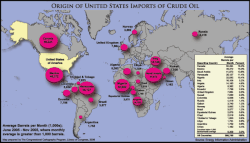
It's a cost we've known ever since the gas shortages of the 1970s. And yet, for more than 30 years, too little has been done about it. There's a lot of talk of action when oil prices skyrocket like they did last summer and everybody says we got to do something about energy independence, but then it slips from the radar when oil prices start falling like they have recently. So we shift from shock to indifference time and again, year after year.
We can't afford that approach anymore -- not when the cost for our economy, for our country, and for our planet is so high. So on this Earth Day, it is time for us to lay a new foundation for economic growth by beginning a new era of energy exploration in America. That's why I'm here. (Applause.)
Now, the choice we face is not between saving our environment and saving our economy. The choice we face is between prosperity and decline. We can remain the world's leading importer of oil, or we can become the world's leading exporter of clean energy. We can allow climate change to wreak unnatural havoc across the landscape, or we can create jobs working to prevent its worst effects. We can hand over the jobs of the 21st century to our competitors, or we can confront what countries in Europe and Asia have already recognized as both a challenge and an opportunity: The nation that leads the world in creating new energy sources will be the nation that leads the 21st-century global economy.
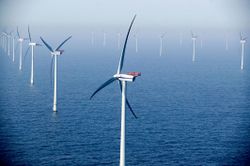
America can be that nation. America must be that nation. And while we seek new forms of fuel to power our homes and cars and businesses, we will rely on the same ingenuity -- the same American spirit -- that has always been a part of our American story.
Now, this will not be easy. There aren't any silver bullets. There's no magic energy source right now. Maybe some kid in a lab somewhere is figuring it out. Twenty years from now, there may be an entirely new energy source that we don't yet know about. But right now, there's no silver bullet. It's going to take a variety of energy sources, pursued through a variety of policies, to drastically reduce our dependence on oil and fossil fuels. As I've often said, in the short term, as we transition to renewable energy, we can and should increase our domestic production of oil and natural gas. We're not going to transform our economy overnight. We still need more oil, we still need more gas. If we've got some here in the United States that we can use, we should find it and do so in an environmentally sustainable way. We also need to find safer ways to use nuclear power and store nuclear waste.
But the bulk of our efforts must focus on unleashing a new, clean-energy economy that will begin to reduce our dependence on foreign oil, will cut our carbon pollution by about 80 percent by 2050, and create millions of new jobs right here in America -- right here in Newton.
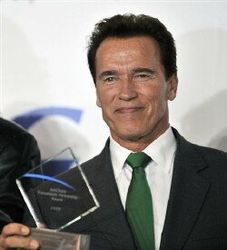
My administration has already taken unprecedented action towards this goal. It's work that begins with the simplest, fastest, most effective way we have to make our economy cleaner, and that is to make our economy more energy efficient. California has shown that it can be done; while electricity consumption grew 50 percent in this country over the last three decades, in California, it remained flat.
Think about this. I want everybody to think about this. Over the last several decades, the rest of the country, we used 50 percent more energy; California remained flat, used the same amount, even though that they were growing just as fast as the rest of the country -- because they were more energy efficient. They put in some good policy early on that assured that they weren't wasting energy. Now, if California can do it, then the whole country can do it. Iowa can do it.
Through the American Recovery and Reinvestment Act, we've begun to modernize 75 percent of all federal building space, which has the potential to reduce long-term energy costs just in federal buildings by billions of dollars on behalf of taxpayers. We're providing grants to states to help weatherize hundreds of thousands of homes, which will save the families that benefit about $350 each year. That's like a $350 tax cut.

Consumers are also eligible as part of the Recovery Act for up to $1,500 in tax credits to purchase more efficient cooling and heating systems, insulation and windows in order to reduce their energy bills. And I've issued a memorandum to the Department of Energy to implement more aggressive efficiency standards for common household appliances, like dishwashers and refrigerators. We actually have made so much progress, just on something as simple as refrigerators, that you have seen refrigerators today many times more efficient than they were back in 1974. We save huge amounts of energy if we upgrade those appliances. Through this -- through these steps, over the next three decades, we will save twice the amount of energy produced by all the coal-fired power plants in America in any given year.
We're already seeing reports from across the country of how this is beginning to create jobs, because local governments and businesses rush to hire folks to do the work of building and installing these energy-efficient products.
And these steps will spur job creation and innovation as more Americans make purchases that place a premium on reducing energy consumption. Business across the country will join the competition, developing new products, seeking new consumers.
In the end, the sum total of choices made by consumers and companies in response to our recovery plan will mean less pollution in our air and water, it'll reduce costs for families and businesses -- money in your pocket -- and it will lower our overall reliance on fossil fuels which disrupt our environment and endanger our children's future.
So, that's step number one: energy efficiency. That's the low-hanging fruit. But energy efficiency can only take us part of the way. Even as we're conserving energy, we need to change the way we produce energy.

Today, America produces less than 3 percent of our electricity through renewable sources like wind and solar -- less than 3 percent. Now, in comparison, Denmark produces almost 20 percent of their electricity through wind power. We pioneered solar technology, but we've fallen behind countries like Germany and Japan in generating it, even though we've got more sun than either country. [ATH: Bandarķkin framleiša um 7-9% orkunnar meš endurnżjanlegum orkugjöfum en žar sem lķfenaeldsneyti er lķtt notaš til rafmagnsframleišslu er hlutfall endurnżjanlegrar orku ķ rafmagnsframleišslunni um 3%].
I don't accept this is the way it has to be. When it comes to renewable energy, I don't think we should be followers, I think it's time for us to lead. (Applause.)

We are now poised to do exactly that. According to some estimates, last year, 40 percent of all new generating capacity in our country came from wind. In Iowa, you know what this means. This state is second only to Texas in installed wind capacity, which more than doubled last year alone. The result: Once shuttered factories are whirring back to life right here at Trinity; at TPI Composites, where more than 300 workers are manufacturing turbine blades, same thing; elsewhere in this state and across America.
In 2000, energy technology represented just one half of one percent of all venture capital investments. Today, it's more than 10 percent.
The recovery plan seeks to build on this progress, and encourage even faster growth. We're providing incentives to double our nation's capacity to generate renewable energy over the next few years -- extending the production tax credit, providing loan guarantees, offering grants to spur investment in new sources of renewable fuel and electricity.
My budget also invests $15 billion each year for 10 years to develop clean energy including wind power and solar power, geothermal energy and clean coal technology.

And today I'm announcing that my administration is taking another historic step. Through the Department of Interior, we are establishing a program to authorize -- for the very first time -- the leasing of federal waters for projects to generate electricity from wind as well as from ocean currents and other renewable sources. And this will open the door to major investments in offshore clean energy. For example, there is enormous interest in wind projects off the coasts of New Jersey and Delaware, and today's announcement will enable these projects to move forward.
It's estimated that if we fully pursue our potential for wind energy on land and offshore, wind can generate as much as 20 percent of our electricity by 2030 and create a quarter-million jobs in the process -- 250,000 jobs in the process, jobs that pay well and provide good benefits. It's a win-win: It's good for the environment; it's great for the economy.
Even as we pursue renewable energy from the wind and the sun and other sources, we also need a smarter, stronger electricity grid -- some of you have been hearing about this, this smart grid -- a grid that can carry energy from one end of this country to the other. So when you guys are building these amazing towers and the turbines are going up and they're producing energy, we've got to make sure that energy produced in Iowa can get to Chicago; energy produced in North Dakota can get to Milwaukee. That's why we're making an $11 billion investment through the recovery plan to modernize the way we distribute electricity.
And as we're taking unprecedented steps to save energy and generate new kinds of energy for our homes and businesses, we need to do the same for our cars and trucks.
Right now, two of America's iconic automakers are considering their future. They're facing difficult challenges -- I'm talking about Chrysler and GM. But one thing we know is that for automakers to succeed in the future, these companies need to build the cars of the future -- they can't build the cars of the past. Yet, for decades, fuel economy and fuel economy standards have stagnated, leaving American consumers vulnerable to the ebb and flow of gas prices. When gas prices spike up like they did last summer, suddenly the market for American cars plummets because we build SUVs. That's it. It leaves the American economy ever more dependent on the supply of foreign oil.
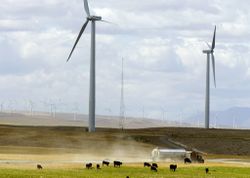
We have to create the incentives for companies to develop the next generation of clean-energy vehicles -- and for Americans to drive them, particularly as the U.S. auto industry moves forward on a historic restructuring that can position it for a more prosperous future.
And that's why my administration has begun to put in place higher fuel economy standards for the first time since the mid-1980s, so our cars will get better mileage, saving drivers money, spurring companies to develop more innovative products. The Recovery Act also includes $2 billion in competitive grants to develop the next generation of batteries for plug-in hybrids. We're planning to buy 17,600 American-made, fuel-efficient cars and trucks for the government fleet. And today, Vice President Biden is announcing a Clean Cities grant program through the Recovery Act to help state and local governments purchase clean-energy vehicles, too.
We can clean up our environment and put people back to work in a strong U.S. auto industry, but we've got to have some imagination and we've got to be bold. We can't be looking backwards, we've got to look -- we've got to look forward.
My budget is also making unprecedented investments in mass transit, high-speed rail, and in our highway system to reduce the congestion that wastes money and time and energy. We need to connect Des Moines to Chicago with high-speed rail all across the Midwest. (Applause.) That way you don't have to take off your shoes when you want to go visit Chicago going through the airport.
My budget also invests in advanced biofuels and ethanol, which, as I've said, is an important transitional fuel to help us end our dependence on foreign oil while moving towards clean, homegrown sources of energy.
And while we're creating the incentives for companies to develop these technologies, we're also creating incentives for consumers to adapt to these new technologies. So the Recovery Act includes a new credit -- new tax credit for up to $7,500 to encourage Americans to buy more fuel-efficient cars and trucks. So if you guys are in the market to buy a car or truck, check out that tax credit.

In addition, innovation depends on innovators doing the research and testing the ideas that might not pay off in the short run -- some of them will be dead-ends, won't pay off at all -- but when taken together, hold incredible potential over the long term. And that's why my recovery plan includes the largest investment in basic research funding in American history. And my budget includes a 10-year commitment to make the Research and Experimentation Tax Credit permanent. That's a tax credit that returns $2 to the economy for every dollar we spend. That young guy in the garage designing a new engine or a new battery, that computer scientist who's imagining a new way of thinking about energy, we need to fund them now, fund them early, because that's what America has always been about: technology and innovation.
And this is only the beginning. My administration will be pursuing comprehensive legislation to move towards energy independence and prevent the worst consequences of climate change, while creating the incentives to make clean energy the profitable kind of energy in America.
Now, there's been some debate about this whole climate change issue. But it's serious. It could be a problem. It could end up having an impact on farmers like Rich. If you're starting to see temperatures grow -- rise 1, 2, 3 percent, have a profound impact on our lives. And the fact is, we place limits on pollutants like sulfur dioxide and nitrogen dioxide and other harmful emissions. But we haven't placed any limits on carbon dioxide and other greenhouse gases. It's what's called the carbon loophole.
Now, last week, in response to a mandate from the United States Supreme Court, the Environmental Protection Agency determined that carbon dioxide and other tailpipe emissions are harmful to the health and well-being of our people. So there's no question that we have to regulate carbon pollution in some way; the only question is how we do it.
I believe the best way to do it is through legislation that places a market-based cap on these kinds of emissions. And today, key members of my administration are testifying in Congress on a bill that seeks to enact exactly this kind of market-based approach. My hope is that this will be the vehicle through which we put this policy in effect.
And here's how a market-based cap would work: We'd set a cap, a ceiling, on all the carbon dioxide and other greenhouse gases that our economy is allowed to produce in total, combining the emissions from cars and trucks, coal-fired power plants, energy-intensive industries, all sources.
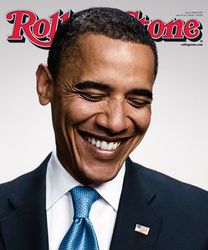
And by setting an overall cap, carbon pollution becomes like a commodity. It places a value on a limited resource, and that is the ability to pollute. And to determine that value, just like any other traded commodity, we'd create a market where companies could buy and sell the right to produce a certain amount of carbon pollution. And in this way, every company can determine for itself whether it makes sense to spend the money to become cleaner or more efficient, or to spend the money on a certain amount of allowable pollution.
Over time, as the cap on greenhouse gases is lowered, the commodity becomes scarcer -- and the price goes up. And year by year, companies and consumers would have greater incentive to invest in clean energy and energy efficiency as the price of the status quo became more expensive.
What this does is it makes wind power more economical, makes solar power more economical. Clean energy all becomes more economical. And by closing the carbon loophole through this kind of market-based cap, we can address in a systematic way all the facets of the energy crisis: We lower our dependence on foreign oil, we reduce our use of fossil fuels, we promote new industries right here in America. We set up the right incentives so that everybody is moving in the same direction towards energy independence.
And as we pursue solutions through the public and private sectors, we also need to remember that every American has a role to play. This is not just a job for government. You know, some of you may remember, during the campaign, when gas was real high, I suggested during the campaign that one small step Americans could take would be to keep their tires inflated. Do you remember that? Everybody teased me. They said, oh, look, look, that's Obama's energy policy. My opponents sent around tire gauges. But I tell you what, it turns out that saves you an awful lot of gas -- money in your pocket. It also made sense for our energy use as a whole. If everybody kept their tires inflated, that would have a big dent; it would produce as much oil savings as we might be pumping in some of these offshore sites by drilling.
So we've got to get everybody involved in this process. I don't accept the conventional wisdom that suggests that the American people are unable or unwilling to participate in a national effort to transform the way we use energy. I don't believe that the only thing folks are capable of doing is just paying their taxes. I disagree. I think the American people are ready to be part of a mission. I believe that. (Applause.)
It's not just keeping your tires inflated. If each one of us replaced just one ordinary incandescent light bulb with one of those compact fluorescent light bulbs -- you know, the swirly ones -- that could save enough energy to light 3 million homes. Just one light bulb each -- 3 million homes worth of energy savings. That's just one small step. So all of us are going to have to be involved in this process. And like I said, if you make the investment upfront, you, the individual consumer, will save money in the long term, and all of us collectively will be better off.
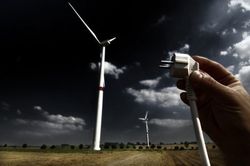
Now, this is also a global problem, so it's going to require a global coalition to solve it. If we've got problems with climate change, and the temperature rising all around the world, that knows no boundaries; and the decisions of any nation will affect every nation. So next week, I will be gathering leaders of major economies from all around the world to talk about how we can work together to address this energy crisis and this climate crisis.
Truth is the United States has been slow to participate in this kind of a process, working with other nations. But those days are over now. We are ready to engage -- and we're asking other nations to join us in tackling this challenge together. (Applause.)
All of these steps, all of these steps we've taken in just the first three months, probably represents more progress than we've achieved in three decades on the energy front. We're beginning the difficult work of reducing our dependence on foreign oil. We're beginning to break the bonds, the grip, that fossil fuels has on us. We're beginning to create a new, clean-energy economy -- and the millions of jobs that will flow from it.
Now, there are those who still cling to the notion that we ought to just continue doing what we do; that we can't change; Americans like to use a lot of energy, that's just how we are; that government has neither the responsibility nor the reason to address our dependence on energy sources even though they undermine our security and threaten our economy and endanger our planet.
And then there is this even more dangerous idea -- the idea that there's nothing we can do about it: our politics is broken, our people are unwilling to make hard choices. So politicians decide, look, even though we know it's something that has to be done, we're just going to put it off. That's what happened for the last three, four, five decades. Everybody has known that we had to do something but nobody wanted to actually go ahead and do it because it's hard.
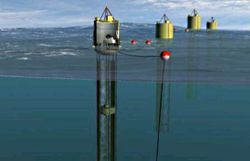
So the implication in this argument is that we've somehow lost something important -- that perhaps because of the very prosperity we've built over the course of generations, that we've given up that fighting American spirit, that sense of optimism, that willingness to tackle tough challenges, that determination to see those challenges to the end, the notion that we've gotten soft somehow.
I reject that argument. I reject it because of what you're doing right here at Trinity; what's happening right here in Newton after folks have gone through hard times. I reject it because of what I've seen across this country, in all the eyes of the people that I've met, in the stories that I've heard, in the factories I've visited, in the places where I've seen the future being pieced together -- test by test, trial by trial.
So it will not be easy. There will be bumps along the road. There will be costs for our nation and for each of us as individuals. As I said before, there's no magic bullet, there's no perfect answer to our energy needs. All of us are going to have to use energy more wisely. But I know that we are ready and able to meet these challenges. All of us are beneficiaries of a daring and innovative past. Our parents, our grandparents, our great-grandparents adapted to much more difficult circumstances to deliver the prosperity that we enjoy today.
And I'm confident that we can be and will be the benefactors of a brighter future for our children and grandchildren. That can be our legacy -- a legacy of vehicles powered by clean renewable energy traveling past newly opened factories; of industries employing millions of Americans in the work of protecting our planet; of an economy exporting the energy of the future instead of importing the energy of the past; of a nation once again leading the world to meet the challenges of our time.
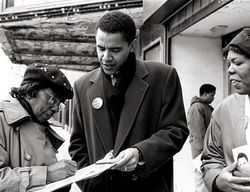
That's our future. I hope you're willing to work with me to get there. Thank you very much. God bless you. God bless the United States of America. Thank you. (Applause.)
END
1:25 P.M. CDT
Flokkur: Višskipti og fjįrmįl | Facebook

Athugasemdir
Ašeins ein Jörš !!! Ég vil žakka góšar greinar undanfarna mįnuši ,greinin um enron mįliš og margar fleiri. Grein žķn um Enron var fyrir tępu įri var góš, og settu margir Enron ķ Ķslenskt samhengi.
Höršur Halldórsson (IP-tala skrįš) 5.5.2009 kl. 13:34
Bęta viš athugasemd [Innskrįning]
Ekki er lengur hęgt aš skrifa athugasemdir viš fęrsluna, žar sem tķmamörk į athugasemdir eru lišin.